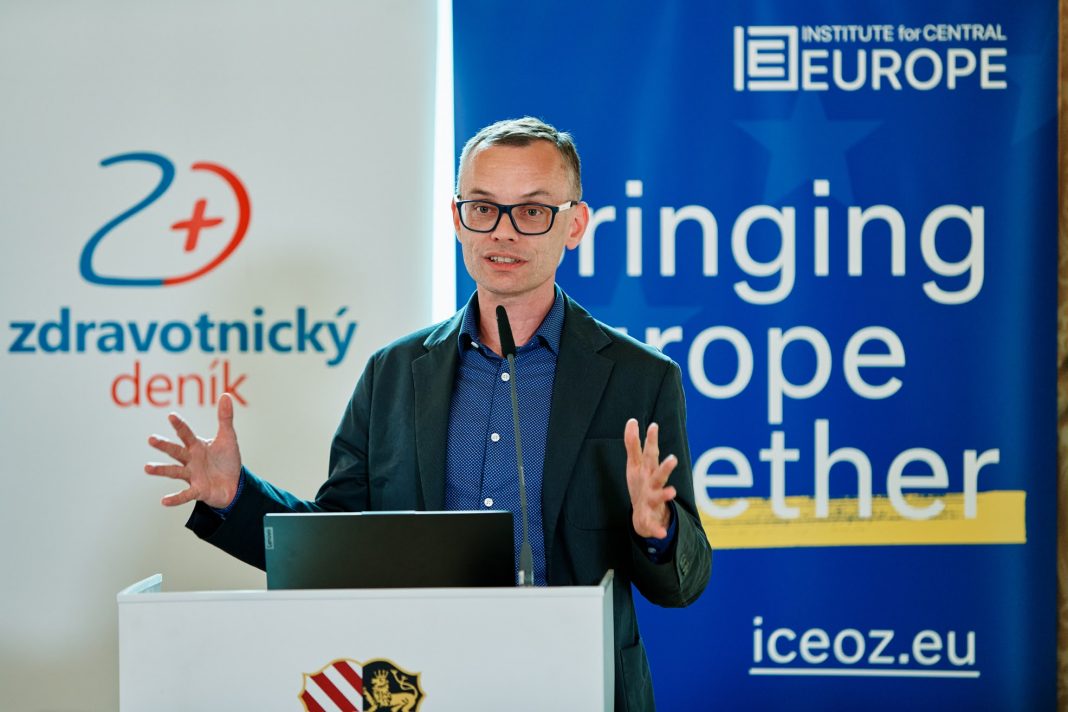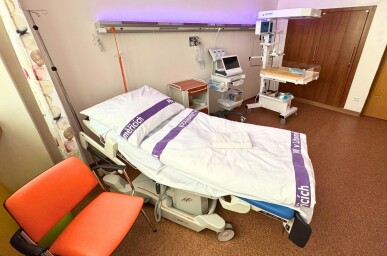In most cases, cardiovascular incidents caused by atherosclerosis can be prevented by leading a healthy lifestyle. Despite this, the hardening of arteries is the most frequent cause of cardiovascular diseases today, ranking in first place in causes of death in the Czech Republic. In addition, the situation is also complicated by the fact that if one is not able to treat high cholesterol levels (without which atherosclerosis cannot develop) by changing one’s lifestyle, the implementation of time-tested treatment, i.e. statins, is in turn hampered by disinformation. President of the Czech Society for Atherosclerosis Michal Vrablík, also of the 3rd Clinic of Internal Medicine – Endocrinology and Metabolism at the First Medical Faculty of Charles University and the General University Hospital in Prague – stated the aforementioned at the international panel of the Zdravotnický deník Permanent Conference on Czech Healthcare.
“A number of cardiovascular incidents can be prevented. And the ones that can be prevented are those caused by atherosclerotic vascular processes,” professor Michal Vrablík stated.
According to him, every one of us has atherosclerosis because it is a process that begins soon after birth and develops at individual speed depending on the pressure exerted by risk factors. Those who take care of their health need not be bothered by the disease as it remains in its initial and reversible stages, and not in its late stages which lead to occlusive vascular disease and force patients to get emergency treatment at coronary or stroke units.

For example, smoking or diabetes greatly contribute to the development of atherosclerosis. However, atherosclerotic diseases cannot originate without a supply of cholesterol to the vessel walls. Thus, a prerequisite for the development of atherosclerosis is dyslipidaemia.
“Thanks to a number of studies, we know today that those of us who are lucky and are genetically constructed to have a very low concentration of blood cholesterol, live their entire lives without developing diseases dependent on atherosclerosis. People who innately have very low concentrations of cholesterol have practically zero risk of suffering a stroke or myocardial infarction as the result of atherosclerotic vascular damage,” Michal Vrablík pointed out.
The concentration of blood cholesterol is also a parameter that we can influence and which is the basis of successful preventive cardiology. Thanks to this, the death rate from cardiovascular causes has decreased; however, this trend stalled several years ago. “We did experience a dramatic fall in the population’s cholesterol levels; however, in the approximately past ten years, the average cholesterol level has not changed. And it is a level that is assuredly significantly higher than what we currently consider to be the optimum,” Vrablík emphasised.
Mohlo by vás zajímat
But in fact, we now have recommendations available that clearly identify the optimum and risk values. With young people, the low risk does not exceed three millimoles per litre whereas 1.4 millimoles per litre is recommended for patients after myocardial infarction. In contrast, the average Czech has about 3.5 millimoles per litre.
Fast food is cool but contrary to a healthy lifestyle
For the situation to improve, the main responsibility in terms of cardiovascular health should transfer from physicians to the society. Therefore, politicians, health insurance payers, public servants, regulators, and others should assume an active role in which they contribute to changing the norms of the population so that an anti-sclerotic regimen becomes commonplace.
“This is rather difficult because what is now ‘cool’ is a diet found in fast food restaurants. This is in absolute conflict with what we recommend as a healthy lifestyle,” Michal Vrablík emphasised.

In this sense, the pillar of preventive measures should be physical activity and a healthy diet. If, however, optimal levels are not achieved through regimen, which, according to Vráblík, is usually the case with high and very high-risk patients, medicinal preventive care steps in, which also includes pharmacotherapy.
“The Czech Republic is not so badly off in this sense. The main medicines used to influence cholesterol levels and cardiovascular prognoses are widely available. Of course, the situation could always be better and we shall strive to make innovative, modern, and often rather expensive treatment available to the specialised group of patients for whom basic treatment is insufficient,” Michal Vrablík pointed out.
The media also at fault
Sadly, this issue has been significantly affected by disinformation introducing doubt to the benefits of statin-based treatments. “I know of no other field of medicine that suffers so much from disinformation campaigns like the influence of cholesterol levels. We have been using statins in clinical practice for forty years now and the treatment is evidence-based. Those that say that they need further proof of whether long-term use is salubrious and not detrimental will never get it – no more data can be discovered. Despite this, it is a popular discussion topic, also because more than 1.2 million people in the Czech Republic use statins. Therefore, it pertains to a huge proportion of the population. Sadly, though, if you write that statins are great and have ideal beneficial effects, then no one will read it. But if you write: we have discovered that not everything is the way doctors would have you think, and the new information is alarming – then practically everybody will read it,” Vráblík claimed.

Despite this, Vráblík believes that we are doing well, even also in terms of organised care. Nevertheless, preventive care should be in the hands of general practitioners, and this also applies to children. If we are not successful in implementing anti-sclerotic strategies that already start in childhood or adolescence, there is a much smaller chance that we will be successful later.
“Preventive care, at least the medical part, is well-organised in the Czech Republic. I think that legislative conditions and insurance coverage are generously established. However, we have to ask ourselves why only about 50 percent or less of the population takes advantage of preventive check-ups, why they are not promoted, and why they are not properly implemented in all doctor’s offices,” Michal Vráblík concluded.
Michaela Koubová












